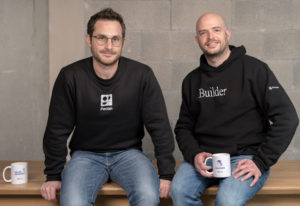
Pecan AI Leaps Over the Skills Gap to Enable Data Science On Demand

As the big data analytics train keeps rolling on, there are still kinks to work out when implementing it in the business world. Building and maintaining a big data infrastructure capable of quickly turning large data sets into actionable insights requires data science expertise — a skillset in high demand but with often low availability. There is also a skills gap between data scientists, analysts, and business users, and while several low or no-code platforms have aimed to resolve this, complexity remains for certain use cases.
One company looking to bridge the gap between business analytics and data science is Pecan AI. The company says its no-code predictive analytics platform is designed for business users across sales, marketing, and operations, as well as the data analytics teams that support them.
“Pecan was built under the assumption that the demand for data science far exceeds the supply of data scientists. We said from the get-go, we wanted to help non-data scientists, specifically BI analysts, to basically leap through the gap of data science knowledge with our platform,” Pecan AI CEO Zohar Bronfman told Datanami in an interview.
 The Pecan AI platform allows users to connect their various data sources through its no-code integration capabilities. A drag-and-drop, SQL-based user interface enables users to create machine learning-ready data sets. Pecan’s proprietary AI algorithms can then build, optimize, and train predictive models using deep neural networks and other ML tools, depending on the needs of the specific use case. With less statistical knowledge required, along with automated data preparation and feature selection, the platform removes some of the technical barriers that BI analysts may face when leveraging data science.
The Pecan AI platform allows users to connect their various data sources through its no-code integration capabilities. A drag-and-drop, SQL-based user interface enables users to create machine learning-ready data sets. Pecan’s proprietary AI algorithms can then build, optimize, and train predictive models using deep neural networks and other ML tools, depending on the needs of the specific use case. With less statistical knowledge required, along with automated data preparation and feature selection, the platform removes some of the technical barriers that BI analysts may face when leveraging data science.
“Interestingly enough, in most of the data science use cases, you would spend, as a data scientist, more time and effort on getting the data right, extracting it, cleansing it, collating it, structuring it, and many other things that basically define data science use cases. And that’s what we’ve been able to automate, so that analysts who have never done this before will be able to do so,” said Bronfman.
Additionally, the platform offers monitoring features to continually analyze data for more accurate predictions, prioritize features as their importance changes over time, and monitor model performance via a live dashboard.
“In data science, the changes that happen around us are very, very impactful and meaningful, and also potentially dangerous,” said Bronfman, referencing how patterns of customer behavior can change as a reaction to factors such as inflation and supply chain disruptions, rendering current models obsolete. According to Bronfman, to continue delivering accurate predictions, the platform automatically looks for changes in patterns within data, and once it identifies a change, the models are retrained and updated by feeding new data into the algorithms to accommodate the more recent patterns.
Bronfman and co-founder and CTO Noam Brezis started Pecan AI in 2016. The two met in graduate school while working toward PhDs in computational neuroscience, and their studies led them to research recent advancements in AI, including its capacity for automating data mining and statistical processes. Brezis became a data analyst with a focus on business analytics, and he was surprised to find that data science know-how was often relegated to highly specialized teams, isolated from the business analysts who could benefit the most from data science’s predictive potential. Bronfman and Brezis saw an opportunity to build a SQL-oriented platform that could leverage the power of data science for a BI audience while eliminating much of the manual data science work.
Pecan AI serves a variety of use cases including sales analytics, conversion, and demand forecasting. Bronfman is especially enthusiastic about Pecan’s predictive analytics capabilities for customer behavior, an area in which he sees three main pillars. The first pillar is acquisition, a stage when companies may be asking how to acquire and engage with new customers: “For the acquisition side of things, predicted lifetime value has been one of the key success stories for us,” Bronfman said of Pecan’s predictive lifetime value models. “Those models eventually give you a very good estimation, way before things actually happen, of how well your campaigns are going to do from the marketing side. Once you have a predicted lifetime value model in place, you can wait just a couple of days with the campaign and say, ‘Oh, the ally is going to disinvest in a month or three months’ time, so I should double down my spend on this campaign,’ or, in other cases, ‘I should refrain from investing more.’”
The second customer behavior pillar is the monetization pillar, a time when companies may be asking how they can offer the customer a better experience to encourage their continued engagement: “If you have the opportunity to offer an additional product, service, [or] brand, whatever that might be, you need to optimize both for what you are offering, and not less importantly, when you are offering [it]. So again, our predictions are able to tell you at the customer level, who should be offered what and when,” said Bronfman.
Finally, the third pillar is retention, an area where Bronfman notes it is far more economically efficient to retain customers rather than acquire new ones: “For the retention side of things, the classic use case, which has been extremely valuable and gotten us excited, is churn prediction. Churn is a very interesting data science domain because predicting churn has been notoriously challenging, and it’s a classic case where if you’re not doing it right, you might, unfortunately, get to a place where you are accurate with your predictions but you are ineffective.”
When predicting churn, Bronfman says that time is of the essence: “When a customer has already made a final decision to churn, even if you’re able to predict it before they’ve communicated it, you won’t be able in most cases, to change their mind. But if you’re able to predict churn way in advance, which is what we specialize in, then you still have this narrow time window of opportunity to preemptively engage with the customer to give them a better experience, a better price, a better retargeting effort, whatever that might be, and increase your retention rates.”
Investors and customers alike seem keen on what Pecan has to offer, and the company is seeing significant growth. So far, the company has raised a total of $116 million, including its latest Series C funding round of $66 million occurring in February, led by Insight Partners, with participation from GV and existing investors S-Capital, GGV Capital, Dell Technologies Capital, Mindset Ventures, and Vintage Investment Partners.
Pecan recently announced it has more than doubled its revenue in the first half of this year, with its annual recurring revenue increasing by 150%. Its customer count increased by 121%, with mobile gaming companies Genesis and Beach Bum and wellness brand Hydrant joining its roster which already includes Johnson & Johnson and CAA Club Group. The company also expanded its number of employees to 125 for a 60% increase.
Bronfman says Pecan’s growth stems from a strong tailwind of two factors: “Analysts are loving the fact that they can evolve, upskill, and start being data scientists on demand. But also, we came to realize that business stakeholders love that they can drive quick and effective data science without necessarily requiring data science resources.”
Related Items:
Pecan AI Announces One-Click Model Deployment and Integration with Common CRMs
Foundry Data & Analytics Study Reveals Investment, Challenges in Business Data Initiatives
Narrowing the AI-BI Gap with Exploratory Analysis




























